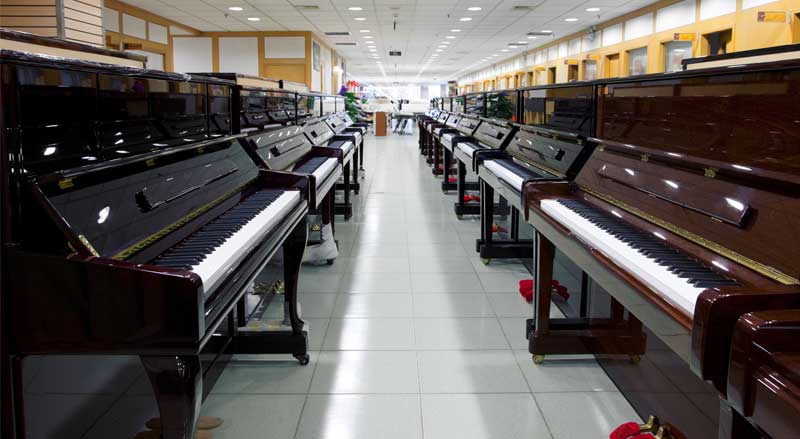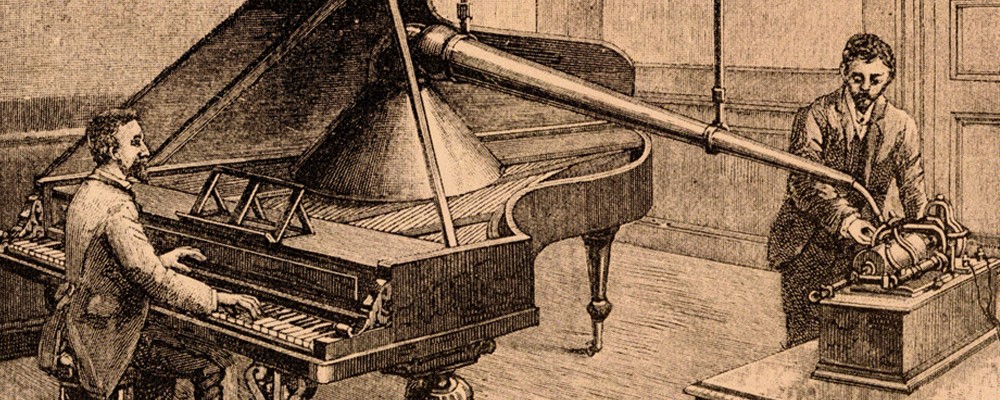

When we think about musical instruments, one of the first examples that come to mind is the piano. In many ways, the piano is the foundation of instrumental music. The piano is the only instrument whose range can span the entire range of the orchestra. A strong solo instrument, duet, or ensemble instrument, and even as the featured instrument or backbone of a symphony, the piano remains one of the most popular options to this day. So, where did the piano come from? How was it invented?
The foundation of the piano is built on innovations made from earlier keyboard instruments. For example, pipe organs have been used for centuries, and the first string instruments were singular strings like the dulcimers. These musical methods formed the foundation of the piano.
By the 1600s, the harpsichord was ubiquitous throughout society. With a harpsichord, the strings are mechanically plucked by small quills when the musician presses a key. In the minds of many, the harpsichord is the predecessor of the piano.
Most people credit the invention of the piano to Bartolomeo Cristofori, who lived in Padua, Italy during the 1600s and 1700s. He was an expert at making harpsichords and decided to expand on the harpsichord, inventing the first piano. While it is uncertain when he invented the first piano, there are records from the Medici family in Italy indicating that there was a piano in existence by 1700. Furthermore, three Cristofori pianos date back to the 1720s that remain in existence to this day.
The first piano remained in relative ambiguity until an article was published in 1711, singing the praises of Cristofori’s invention. Most of the early piano makers designed their models based on this article. The fortepiano is the primary version of the piano. The most significant distinction from the harpsicord was that the piano used hammers to strike the strings versus the harpsicord which would pluck the strings. This innovation provided an entirely new dimension to the piano as a musical instrument.
For the first time, the musician could control the volume of every note they played. The harder they pressed the key on a piano, the louder the sound. This we a massive innovation because the harpsichord was not “touch-sensitive”. The harpsichord would play the same volume, regardless of how hard each key was played. For this reason, the original name of the piano in Italian was the Fortepiano as “forte” translates to “loud”, and “piano” means soft in Italian.
During the next few decades, numerous innovations were added to the piano, including the sustain pedal. Piano making flourished at the Viennese school during the late 1700s, and this gave birth to the modern piano of today.
There were a number of innovations that helped the fortepiano evolve into the modern piano we know and love today. These included:
• High-quality piano wire was developed specifically for the springs
• Three strings were added to each note to allow for rich, complex, splendorous sounds
• Precision casting was used to make precise piano plates or harps
• Two octaves were added to the piano, bringing the total to seven
• Repetition levers were added to allow for repeating the same note quickly
These innovations were enjoyed by composers such as Chopin, Liszt, Debussy, and Ravel, spanning the periods, and allowing for the expansion of classical music as the Romantic period arrived on the scene.
The finest pianos of today, have the best of all worlds. They are still hand-assembled using the finest materials and workmanship and they have the added advantage of modern technology. There are over 1,000 moving parts in the modern piano. With modern manufacturing techniques, these wooden parts can be milled and manufactured to the most exacting standards and specifications ever available. Fine quality piano scale designs now have over 230 strings that exert 4,000 pounds of pressure on the plate and structural elements of the instrument. This produces the best tone quality and sustain in the history of the instrument.
The most popular American pianos are still designed and built by Baldwin, Steinway, Mason & Hamlin & Charles Walter. The leaders of European piano manufacturing are Bechstein, Blüthner, Bösendorfer, Fazioli, Sauter, Schimmel Schulze-Pollmann, Seiler & Steinway & Sons (Hamburg). Asian pianos are now primarily built in China, Korea, Japan & Indonesia by Kawai, Samick, Yamaha, and Young Chang.
There are several common types of pianos. These include:
• Upright Piano: Upright pianos are arguably the most common type of pianos. They are commonly found in living rooms and schools. They are fan favorites because they are compact, cost less than a grand piano, and provide warm sounds. With upright pianos, the soundboard is vertical, and the strings stretch vertically from the bottom to the top of the instrument. The strings resonate when struck by the hammers using the bridges and soundboard.
The top end of each string is secured with tuning pins that are screwed into a pinblock attached to the piano plate and frame using tuning pins. Because this type of piano stands upright, the hammers strike the strings from a vertical position, which is not quite as efficient or responsive as the grand piano design.
• Grand Piano: Grand pianos are the closest in design to the original Pianoforte or Fortepiano. They are measured from the front of the keyboard to the furthest point at the back of the piano. Grand pianos are available in sizes ranging from 4′ 7″ to 9″ in length. They have horizontal soundboards and strings that stretch the length of the instrument, so the longer the piano, the larger the sound.
There is also a supportable opening that lifts the top cover up on the right side of the piano, allowing the sound to resonate throughout the home for smaller grand pianos or an entire concert hall for concert grand pianos. While vertical or upright piano hammers are mounted and function vertically, the grand piano hammers are located under the strings, and when a key is depressed the hammer travels in an upward motion to strike the string.
So, gravity is working on behalf of the pianist as the hammers return to their resting position more efficiently and quickly, providing the player the ability to play faster with more dynamic range.
• Digital Piano: Digital pianos are, in many cases, more affordable than the other pianos listed above. They vary greatly in quality; however, it is possible to find touch-sensitive digital pianos that do a great job of replicating the sound and action of acoustic pianos. While digital pianos may not have exactly the same musical or dynamic range as an acoustic piano, they do offer some unique advantages.
For example, digital pianos never need tuning, they can transpose from one key to another, they can be amplified more easily for high volume performance requirements or can be silenced to everyone except the pianist using headphones.
These are just a few of the most common types of pianos that people play today.
In order to truly appreciate the glory and splendor of the piano, it is interesting to know the history of the instrument. Once we understand the amount of design, material and workmanship that goes into producing a piano, it helps us appreciate the value of this fabulous instrument that brings joy, creativity and the admiration of millions of people throughout the world, every day.


